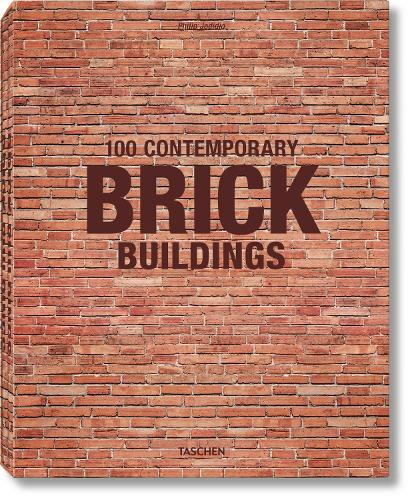
100 Contemporary Brick Buildings
(Hardback, Multilingual edition)
Publishing Details
100 Contemporary Brick Buildings
By (Author) Philip Jodidio
Taschen GmbH
Taschen GmbH
8th September 2017
Multilingual edition
Germany
Classifications
General
Non Fiction
Architectural structure and design
721.04421
Physical Properties
Hardback
Contains 2 hardbacks
648
Width 240mm, Height 305mm
4988g
Description
Of all building materials in the world, brick is one of the most enduring and ubiquitous. Traces of brickmaking date back to 7500 BC and fired brick first made its appearance in about 3500 BC. Since then, the trusty brick has shown amazing resilience and remains one of the mainstays of contemporary architecture. Rooted in tradition in countries as different as China and the Netherlands, it is inexpensive, flexible in use, and can also be ecologically fabricated. This comprehensive two-volume set tours the world to cover the most exciting and innovative brick buildings of the past 15 years, from Argentina to New Zealand. True to all TASCHEN architecture tomes, it includes new talents like Argentina's Diego Arraigada and Vietnam's Nguyen Hai Long as well as established starchitects such as Tadao Ando and Peter Zumthor. Featured buildings showcase the variety of brick applications across cultural, domestic, infrastructure, and leisure spaces, including Tate Modern Switch House by Herzog & De Meuron, Tidy Architects' Amorio Restaurant in Santiago, and Mass Design Group's Maternity Waiting Village in Kasungu, Malawi.
Reviews
This giant publication includes photographs, architect biographies, and architectural drawings. Guaranteed to put a welcome strain on your coffee table. * We Heart *
Author Bio
Philip Jodidio studied art history and economics at Harvard and edited Connaissance des Arts for over 20 years. His TASCHEN books include the Architecture Now! series and monographs on numerous major architects, including Norman Foster, Tadao Ando, Renzo Piano, Jean Nouvel, and Zaha Hadid., Philip Jodidio studied art history and economics at Harvard, and edited Connaissance des Arts for over 20 years. His TASCHEN books include the Architecture Now! series and monographs on Tadao Ando, Santiago Calatrava, Renzo Piano, Jean Nouvel, Shigeru Ban, Richard Meier, Zaha Hadid, and soon Norman Foster.
